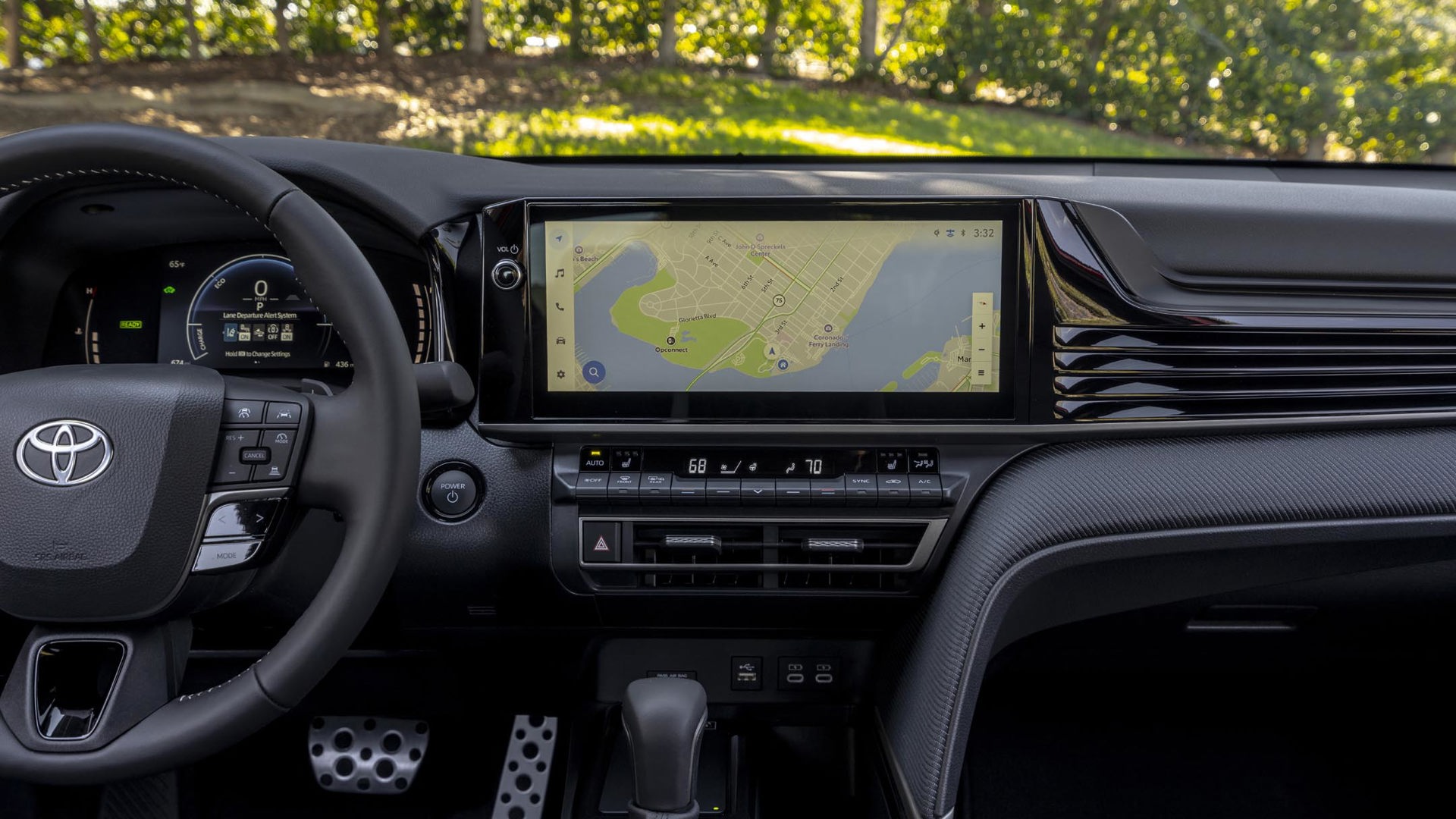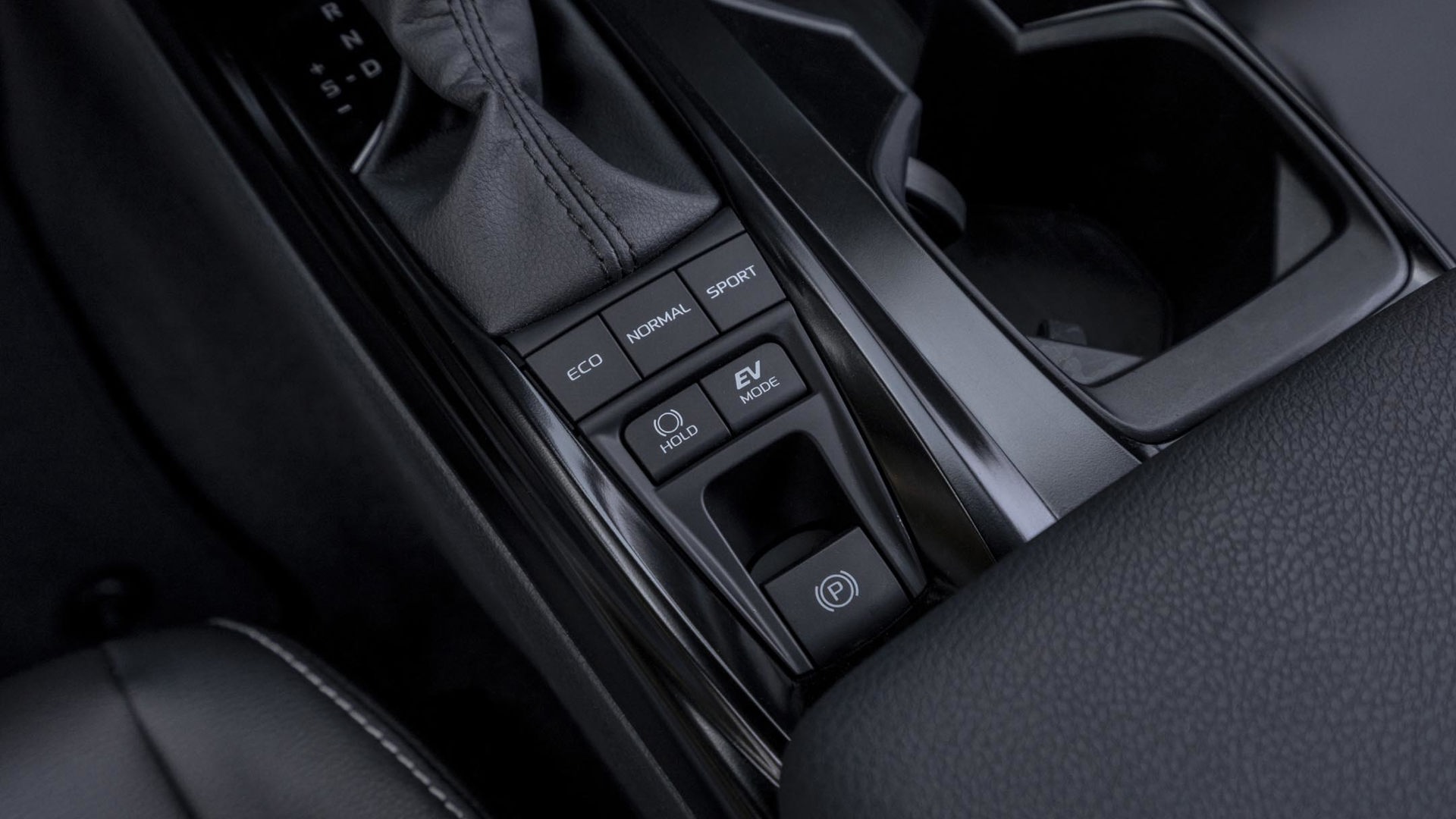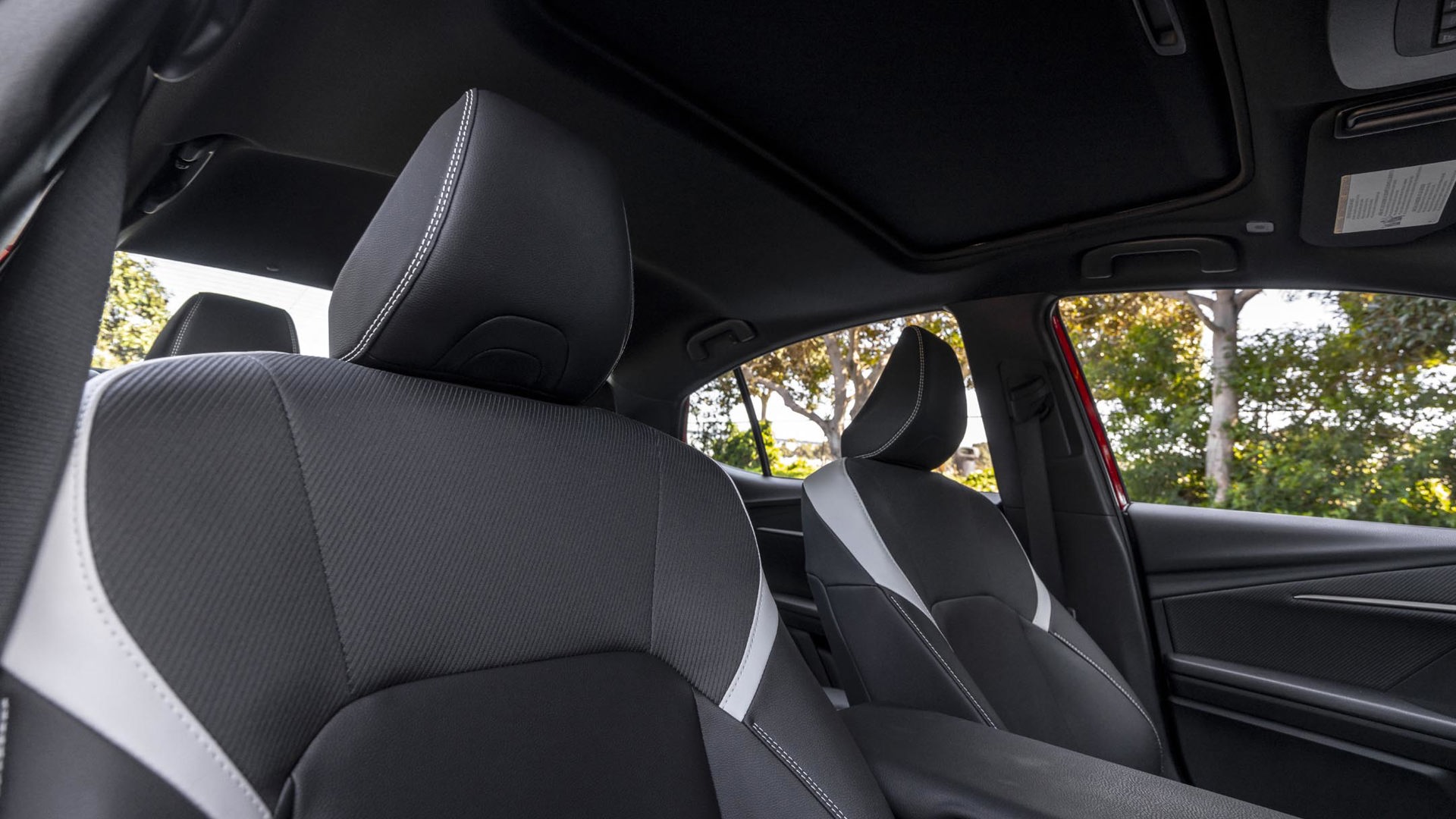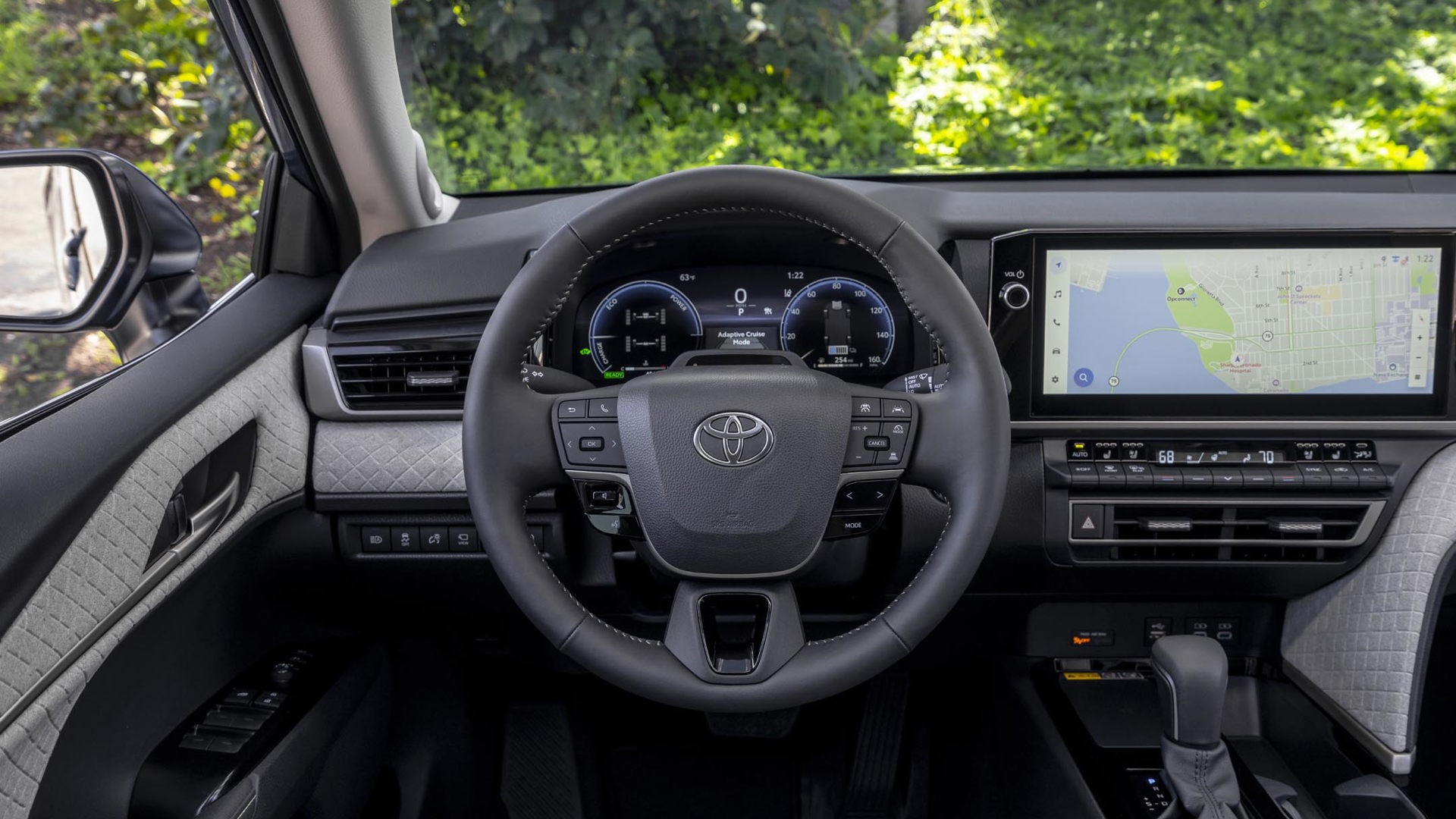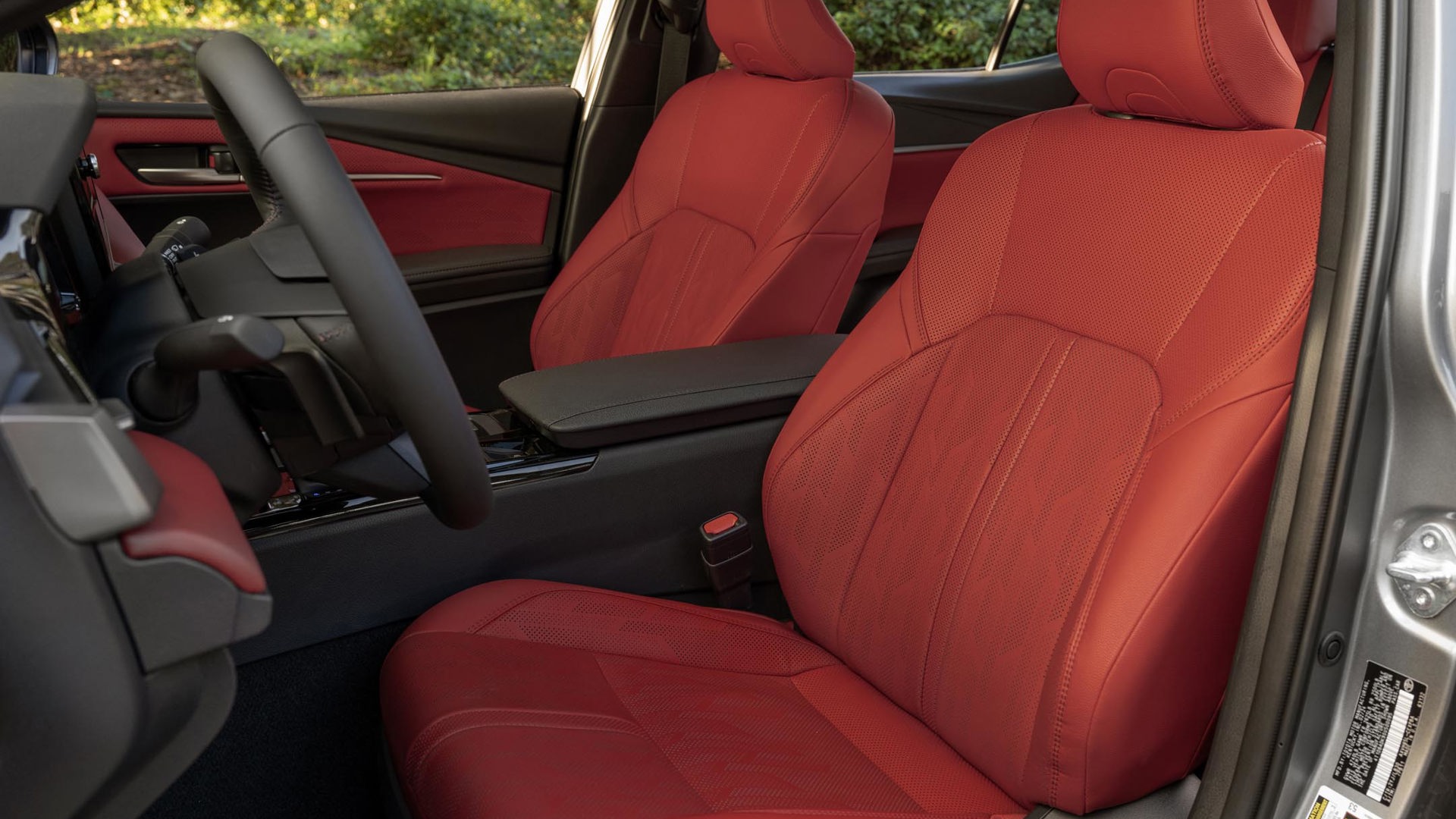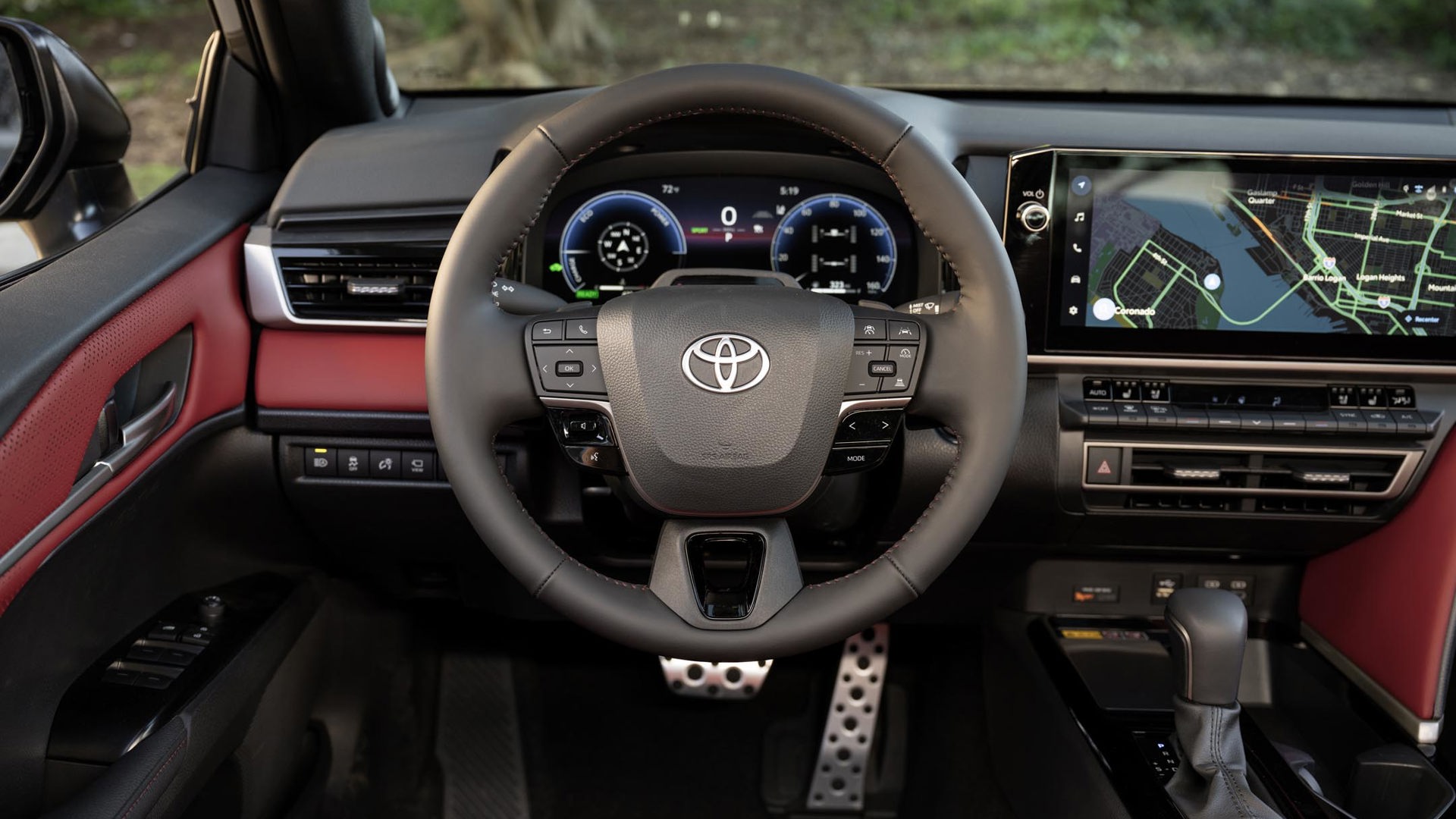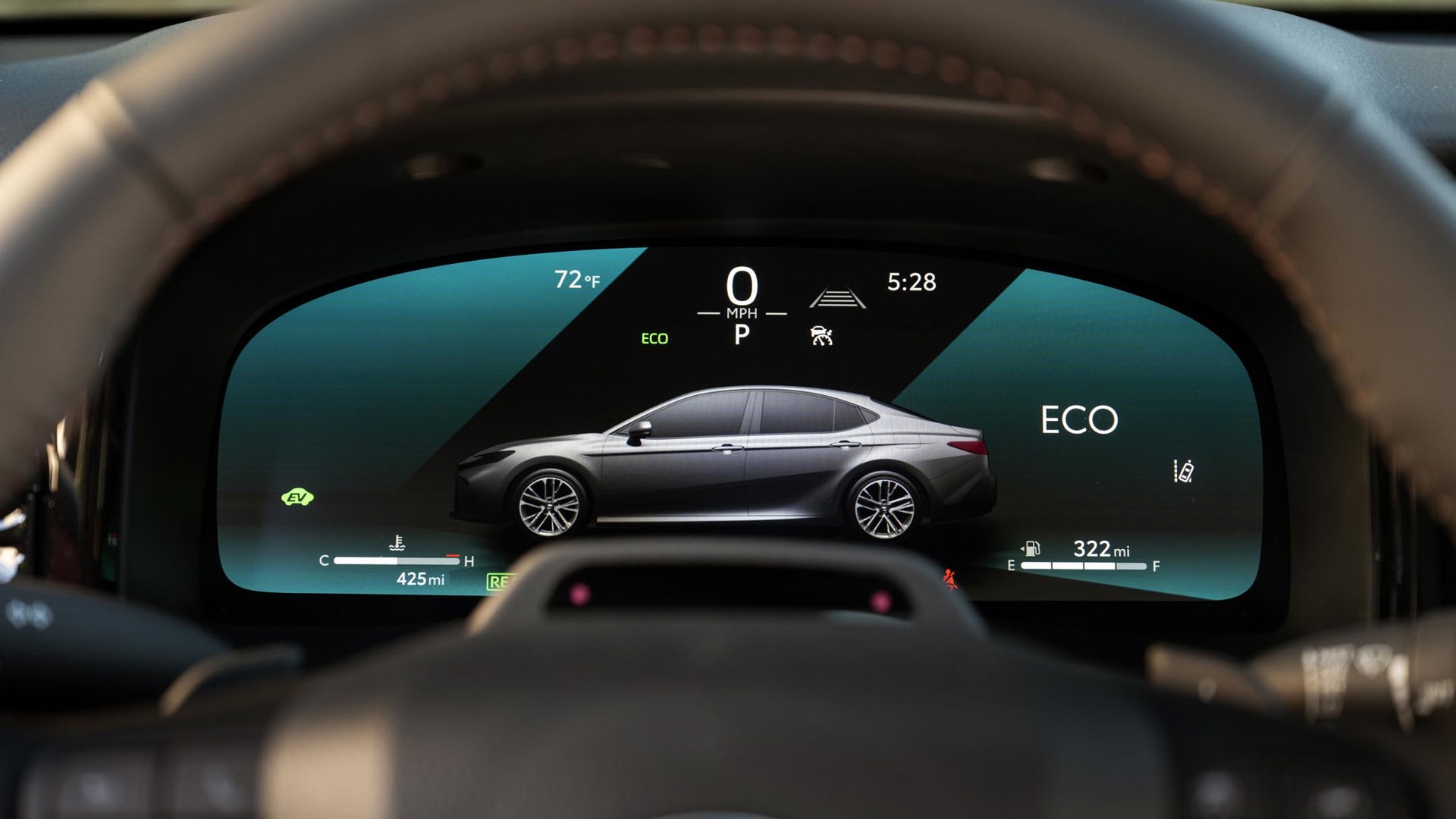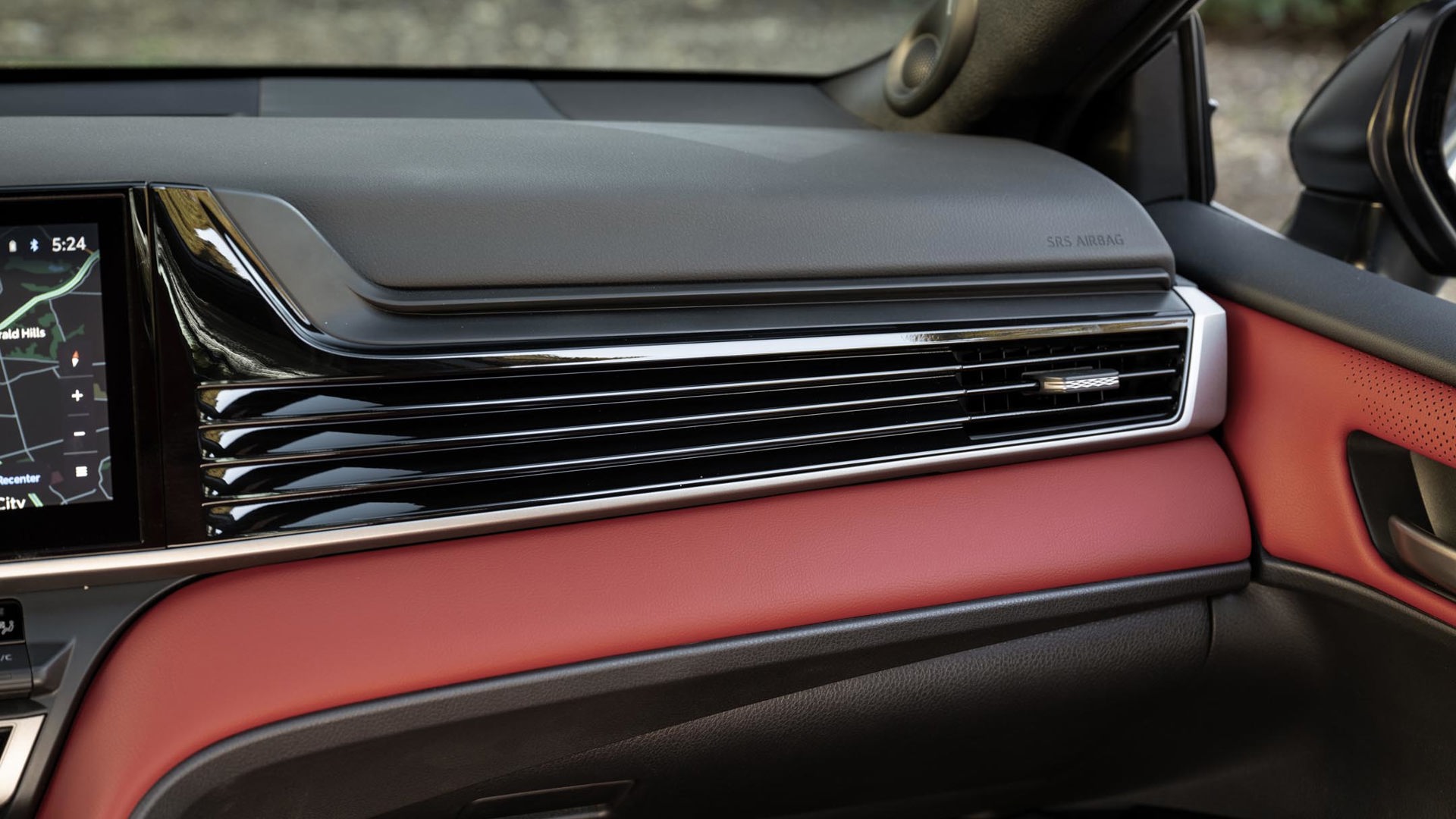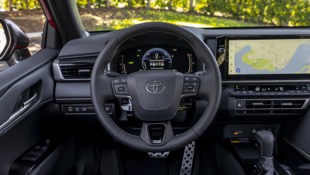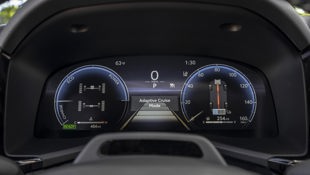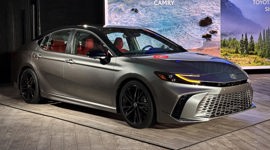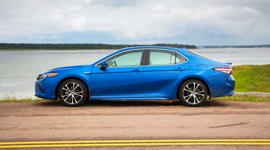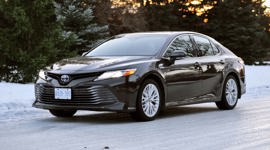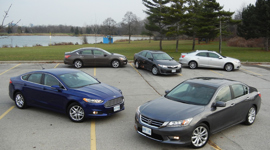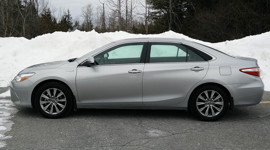Photos by Brendan McAleer, Toyota
Everyone knows the mid-size sedan segment is dead. Why, in 2023, sales of the Toyota Camry fell again, just as they had in 2022. Almost 20 years ago, at least in terms of the U.S. market, Toyota sold nearly half a million Camrys every year. For the past five years, sales have been around 300,000. Wait. Isn’t that kind of a big number?
Yes, yes, it is. For all the doom and gloom about the rush to crossovers, Toyota’s Camry is still a mainstay badge with a strong following. For 2025, the company has refined and polished its offering. Every single Camry sold will be a hybrid with Toyota’s new fifth-gen system. There’s available all-wheel drive and just four trim levels. The styling has been infused with some of the look of the Prius, and it looks pretty sharp. Underneath, the suspension is reworked with Toyota saying that the SE and XSE grades are specifically tuned for sporty character.
It’s not an all-new car, but a thorough optimization of the previous-generation sedan. In a segment that continues to shrink yet still holds promise, the 2025 Toyota Camry is good enough to perhaps be the last mid-sized sedan still standing.
The Thoughtless Hybrid

Toyota wasn’t first to market with a hybrid vehicle – that’d be Honda, with its wacky and adorable first-gen Insight – but it was the most successful. The original Prius was weird and slow, but it worked. The second and third generation became the default taxi driver’s choice. The latest one is even relatively exciting, both in looks and decently quick performance.
By making every new Camry a hybrid, Toyota effectively says, “OK. You get it now.” The Camry gets Toyota’s fifth-generation hybrid system, which is slightly more efficient and lighter in ways that would likely thrill only an automotive engineer. Its driver doesn’t need to know the details. They only need to know that it works.
But here are the details anyway. The combustion engine is a 2.5L four-cylinder unit that makes 184 hp at 6,000 rpm and 183 lb-ft of torque at 5,200 rpm. It has double overhead cams and runs a 14:1 compression ratio on 87 octane – technology that would make the owner of a first-gen MR2 green with envy, now packaged up into a mass-market sedan.
Electric power comes from a lithium-ion battery pack that feeds power to a 100-kW electric motor in all models and a second 30-kW motor on the rear axle for those with all-wheel-drive. Total power is rated at 225 hp for the front-wheel-drive SE, and 232 hp for the SE AWD and everything above it. Official fuel economy figures are a best of 4.5 L/100 km city and 4.7 L/100 km highway for the front-wheel-drive car with the smallest diameter wheels, and a worst of 5.4 L/100 km city and 5.5 L/100 km highway for the XSE and its 19-inch alloys and 235-mm-wide tires.
There is nothing about this car that requires you to make any adjustment from driving a purely combustion-powered sedan. Fill the 50-litre fuel tank to the brim and you could theoretically drive 1,100 km without stopping in one of the front-drive sedans. The trunk holds 424 L of stuff, the same as the outgoing model. The cabin is spacious and comfortable. It’s a Camry.
A Crown by Any Other Name
Toyota has long named its cars after various types of crowns (the Corolla, for instance, is Latin for “small crown”), and if you’re interested in a little trivia, a kanmuri is the traditional black-lacquered headgear you may have seen in a Japanese period piece like the filmed-in-B.C. Shōgun. It is from this noble attire that the Camry takes its name.
Possibly, this seems a little high-falutin’ for the beige sedans with the inevitable rear bumper dents cluttering up the average grocery store parking lot, but for the 2025 model, it could not be more appropriate. The Camry isn’t a luxury product, but it might as well be one. The upgraded cabin is a huge improvement over the previous generation. It is more conventional-looking but also impressive (especially in a red leather that’s quite daring). And then there’s how it drives.
First pour out a 40 oz of high-octane for the departed V6 (not literally, of course, that’d be polluting), as it was one of the best engines that never got any credit. The old Camry TRD was an unexpectedly vigorous hooligan of a thing and will be missed. Sort of.
The sportiest of the 2025 Camrys, the XSE, is nothing like the TRD. That’s a good thing, as the TRD didn’t really fit the Camry mission statement, being a sort of tuner-special trim with a ride that bordered on uncomfortably firm. The XSE is frankly shockingly smooth for a car with 19-inch wheels, even on Southern California’s loud and pitted concrete highways.
There was an opportunity to put the Camry through its paces in some curves up in the hills, but the hugely impressive thing about it was how it removed every sense of effort from driving on the highway. Firstly, it was quiet and composed, zipping along in traffic without a fuss. Second, when a dose of throttle was required to make a merge, catch an exit, or ease around a dawdling truck, the typical drone of a CVT was almost absent.
Toyota says it has retuned the fifth-gen hybrid system to rely more on electric torque when acceleration is called for, and it works. If you really floor it, there is, of course, the typical shiftless surge and a limit to how much power is on offer. For 99 per cent of normal driving duties, the only thing a Camry owner will notice is that power delivery is more than sufficient and fill-ups are few and far between.
However, part of the reason to look at a sedan versus a crossover is that the former comes with a lower centre of gravity and, thus, better handling. The SE and XSE are no TRDs in terms of total grip, but they are genuinely fun to drive when the road gets twisty. The selectable driving modes add weight to the steering – as usual these days, there’s not much feedback. The way the hybrid powertrain delivers mid-range torque turns canyon roads into a momentum game. It’s not quite a sport sedan, but it is pleasingly quick.
Mass-Market Luxury
While Toyota may eventually sell a de-contented Camry to appeal to fleet buyers and Uber drivers, the base SE trim is very well equipped. Canadians will appreciate the standard heated seats and steering wheel – impossible to live without once you’ve had them – and with the 8-inch touchscreen with wireless CarPlay and Android Auto and a wireless charging pad, you don’t really need any more technology than you’re already carrying around in your pocket.
Standard safety assists include Toyota’s latest group of driver aids, including collision warning and automated braking, automatic high-beam headlights, and a lane-keeping system. Blind spot detection and cross-traffic alert are also standard. Anyone buying the Camry for long-distance efficiency will appreciate that full-speed automated cruise control is a standard feature. Price for all this stuff? $34,300, or about 10 per cent more than a base non-hybrid 2024 SE. At $1,600 more than a hybrid LE was in the last generation, it’s not a huge price increase.
An additional $2,000 gets you a moonroof and 18-inch wheels with some other niceties, and $1,650 on top of that gets you all-wheel drive in the SE AWD at $37,950. This is the volume model and has everything you actually need. The XSE and XLE models offer a dose more sport and luxury, respectively.
While ventilated seats, premium stereo upgrades, and a 12.3-inch touchscreen are certainly nice to have, there’s a considerable jump in prices for the Camry’s top models. Having said that, these are both incredibly well-equipped cars for tens of thousands of dollars less than the average price of a new car in Canada these days. The badge on the nose might not indicate aspirations of luxury, but it does come with pretty great resale value.
Final Thoughts

With fewer powertrain options and trims, it would be easy to see the 2025 Camry lineup as Toyota reacting to a shrinking segment by reducing choice. In fact, with the exception of those who were buying bare-bones Camrys for the taxi industry, the new car is even more squarely aimed at the type of buyers who are interested in mid-size sedans in the first place.
The Camry is relentlessly good at its mission, in the kind of way all the best Toyotas are. An enormous amount of engineering has been applied here in such a way as to make itself completely invisible to the consumer. It is satisfying to drive, but undemanding. The fuel economy is better than that of a compact car despite available all-wheel drive. The available options would raise the eyebrows of someone who bought a Mercedes-Benz S-Class a few decades ago, and unlike the Benz, the Camry will still probably run until the heat death of the universe.
Toyota will perhaps sell maybe 2 per cent fewer Camrys for the 2025 model year than it did the 2024 model. It will still sell an almighty lot of them. And every one of those buyers will have made a smart, sensible choice.

















